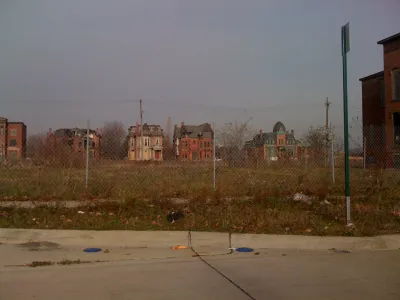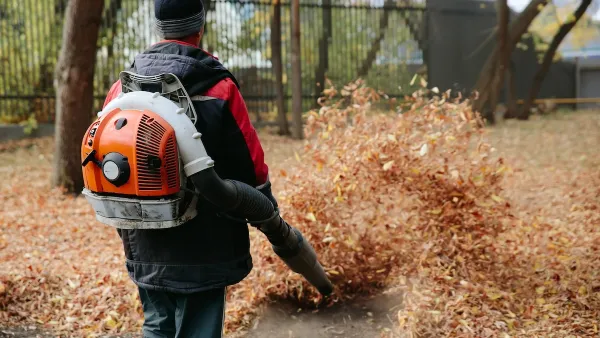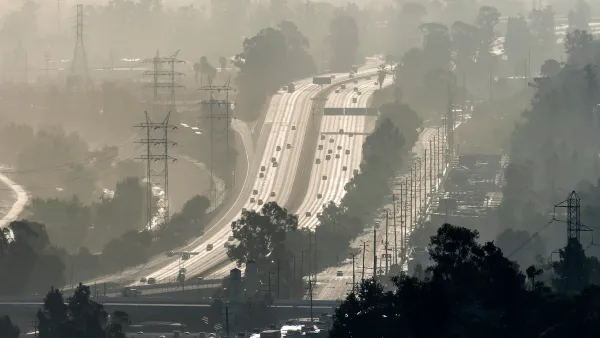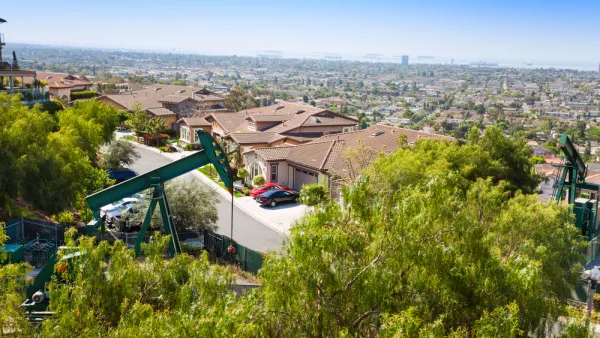The reforestation of Detroit has become a problem for allergy and asthma sufferers in the area.

In 1950 an estimated 1.8 million people lived in Detroit; today that number is closer to 700,000. The land left behind has created an opportunity for plants to reclaim space. "Plants and weeds grow with abandon in the newly exposed soils, and, during their growing seasons, those plants release their pollen loads into the air and into Detroiters’ airways," Lucas Joel writes for Undark Magazine.
Pollen can be an irritant for allergy sufferers and it can worsen asthma attacks. "Detroit currently ranks in the top 10 cities in the U.S. for asthma-related deaths, and a 2016 report revealed that 43.2 percent of asthma-afflicted children who were enrolled in Medicaid in the city had one or more emergency room visits per year for asthma, while the same figure for children in the rest of Michigan stood at 27.5 percent," reports Joel. While the issue of public health involves more than the presence of pollen, pollen is a factor. To make matters worse, it’s difficult to track how much pollen circulates in the area. The only pollen counter is located outside the center of the city, and what’s more, experts believe that pollen counts vary even at the neighborhood level.
Daniel Katz at the University of Michigan School of Public Health is trying to get to the bottom the question of where the pollen is with measuring devices. Katz hopes that mapping the type and volume of pollen around the city can help better inform officials and allergy sufferers as to where the pollen is and how to deal with it.
FULL STORY: As the Forest Moves Back in, Pollen Is on the Rise in Detroit

National Parks Layoffs Will Cause Communities to Lose Billions
Thousands of essential park workers were laid off this week, just before the busy spring break season.

Retro-silient?: America’s First “Eco-burb,” The Woodlands Turns 50
A master-planned community north of Houston offers lessons on green infrastructure and resilient design, but falls short of its founder’s lofty affordability and walkability goals.

Delivering for America Plan Will Downgrade Mail Service in at Least 49.5 Percent of Zip Codes
Republican and Democrat lawmakers criticize the plan for its disproportionate negative impact on rural communities.

Test News Post 1
This is a summary

Test News Headline 46
Test for the image on the front page.

Balancing Bombs and Butterflies: How the National Guard Protects a Rare Species
The National Guard at Fort Indiantown Gap uses GIS technology and land management strategies to balance military training with conservation efforts, ensuring the survival of the rare eastern regal fritillary butterfly.
Urban Design for Planners 1: Software Tools
This six-course series explores essential urban design concepts using open source software and equips planners with the tools they need to participate fully in the urban design process.
Planning for Universal Design
Learn the tools for implementing Universal Design in planning regulations.
EMC Planning Group, Inc.
Planetizen
Planetizen
Mpact (formerly Rail~Volution)
Great Falls Development Authority, Inc.
HUDs Office of Policy Development and Research
NYU Wagner Graduate School of Public Service





























